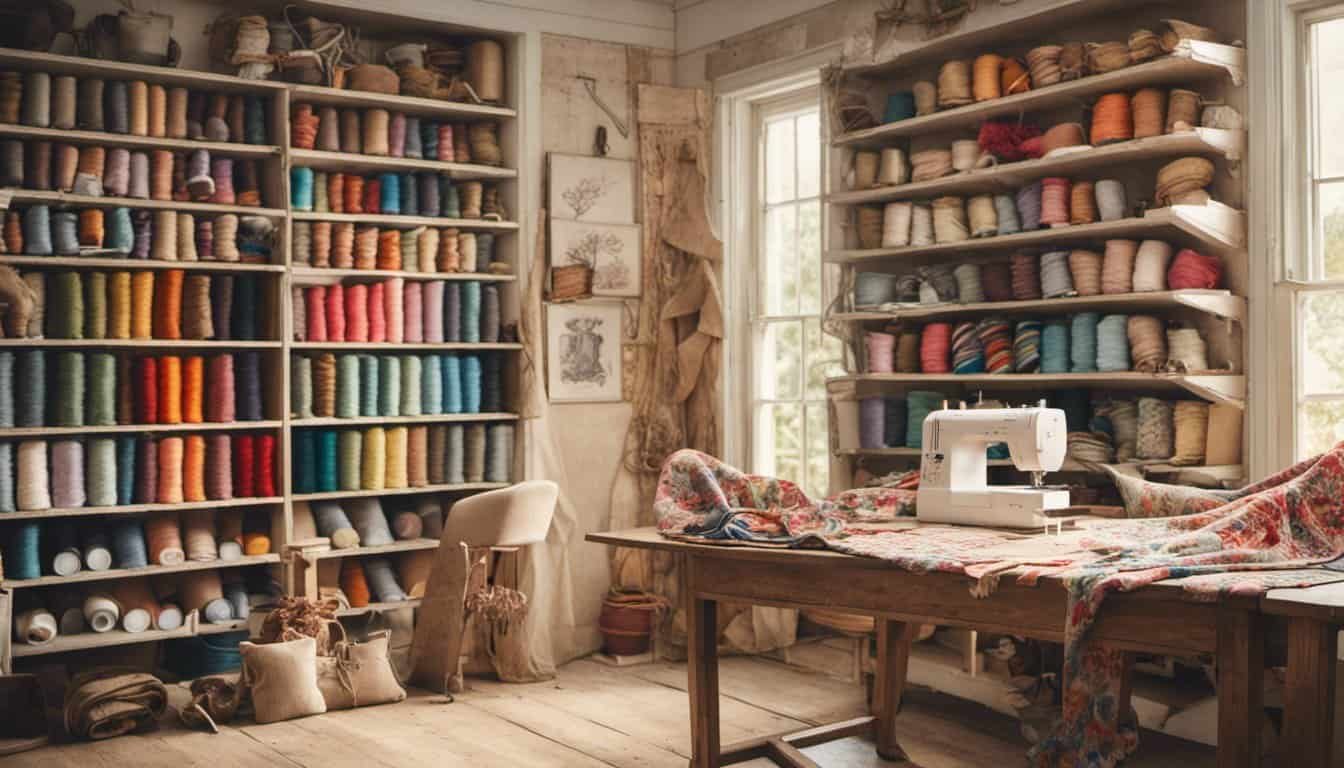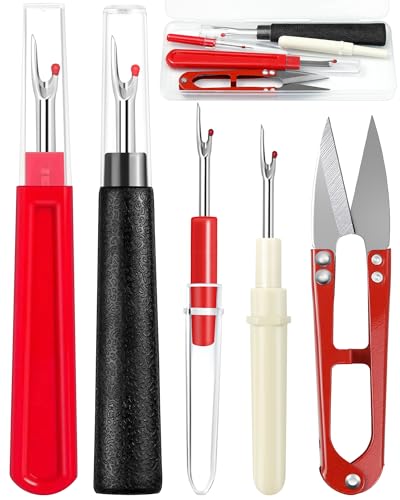Tired of battling tangled pins and accidental fabric snags? Fabric clips could be just what you need to streamline your sewing projects. They offer a secure hold without leaving unwanted holes, making your workflow smoother and your fabrics intact.
Switching to clips is easier than you might think. Whether you’re a seasoned sewist or just starting out, embracing this simple tool can save you time and frustration. Let’s dive into how you can use fabric clips instead of pins to enhance your crafting experience.
Benefits Of Using Fabric Clips Over Pins
- Secure Hold
Fabric clips offer a reliable grip, keeping layers in place throughout your sewing project. This stability minimizes fabric movement, ensuring accurate stitching and consistent results.
- No Fabric Damage
Unlike pins that create holes, fabric clips preserve the integrity of your material. This protection is especially important for delicate fabrics such as silk or chiffon, maintaining their appearance and strength.
- Time Efficiency
Applying and removing fabric clips is faster than handling pins. You’ll spend less time adjusting and more time sewing, which enhances your overall productivity.
- Reusability
Fabric clips can be used repeatedly without losing their effectiveness. This durability reduces the need for constant replacements, offering a cost-effective solution for your crafting needs.
- Improved Visibility and Handling
Clips remain visible and are easier to manage, particularly in intricate or layered projects. Their design allows for quick placement and removal without obstructing your workspace.
- Variety and Versatility
Available in multiple sizes and styles, fabric clips can accommodate various fabric types and project requirements. Whether you’re working with lightweight cotton or heavy denim, there’s a clip that suits your specific needs.
Types Of Fabric Clips
Choosing the right fabric clip can enhance your sewing projects by providing secure holds without damaging your materials. Here are the most popular types you can use instead of pins:
Alligator Clips
Alligator clips feature a long, narrow design with serrated jaws that grip fabric firmly. They offer:
- Secure Hold: Prevents fabric from shifting during stitching.
- Adjustable Tension: Allows customization based on fabric thickness.
- Ease of Use: Simple to attach and remove without snagging.
Bulldog Clips
Bulldog clips are sturdy with strong springs, making them ideal for heavy or multiple layers of fabric. They provide:
- High Grip Strength: Keeps thick fabrics and multiple layers in place.
- Durability: Long-lasting design suitable for repetitive use.
- Versatility: Works well for both straight and curved seams.
Binder Clips
- Multiple Sizes: Accommodates different project scales and fabric types.
- Wide Clasp: Reduces the risk of leaving marks on delicate materials.
- Reusability: Easy to clean and reuse for various sewing tasks.
Choosing The Right Fabric Clip
Selecting the appropriate fabric clip ensures your sewing projects proceed smoothly. Begin by identifying the fabric type. Thicker materials like denim or canvas require sturdy clips such as bulldog or alligator clips. For lightweight fabrics like silk or chiffon, opt for binder clips to prevent marks and damage.
Consider the clip size based on your project scale. Larger clips offer a stronger hold for extensive fabric areas, while smaller clips are ideal for intricate details. Evaluate the clip’s jaw design as well. Serrated jaws provide extra grip on slippery fabrics, whereas smooth jaws work well with non-slip materials.
Assess the clip’s adjustability. Adjustable tension allows you to customize the grip strength, accommodating various fabric thicknesses and layers. Durability is another factor; high-quality clips made from stainless steel or robust plastic last longer and maintain their functionality over time.

Lastly, think about ease of use. Clips with ergonomic handles or quick-release mechanisms enhance your workflow, making it easier to reposition and remove clips without hassle. By considering these factors, you select fabric clips that best suit your specific sewing needs.
Step-By-Step Guide To Using Fabric Clips
Follow these steps to effectively use fabric clips in your sewing projects. Complete each step accurately for optimal results.
Preparing Your Fabric
- Clean and press the fabric to remove wrinkles and ensure smoothness.
- Measure and mark the areas requiring clips using fabric chalk or markers.
- Lay out the fabric on a flat surface, aligning layers precisely.
- Select the appropriate size and type of fabric clip based on fabric thickness and project requirements.
Attaching The Clips
- Position the clip at the marked location, securing the fabric layers.
- Open the clip by pressing the handles together.
- Place the fabric between the clip jaws without stretching the material.
- Release the handles to lock the clip in place.
- Repeat for all marked points, maintaining consistent spacing.
Adjusting For Fit
- Check the tension of each clip to ensure fabrics are held without distortion.
- Realign clips if any movement occurs during sewing.
- Resize or switch clips for different fabric areas as needed.
- Verify the alignment periodically to maintain fabric integrity throughout the project.
Tips And Tricks For Effective Use
Maximize your sewing projects with these fabric clip techniques:
Organize Your Clips
Arrange clips by type and size for quick selection. Keep alligator, bulldog, and binder clips in separate containers. Label each section to streamline your workflow.
Select the Right Clip Size
Match clip size to fabric thickness. Use larger clips for heavy materials like denim or canvas. Opt for smaller clips with delicate fabrics to prevent marks.
Position Clips Strategically
« How to Repair a Frayed Edge After Sewing: 7 Easy Tricks Every Seamstress Must Know
10 Expert Tips on How to Work with Jersey Fabric for T-Shirts Like a Pro »
Place clips at consistent intervals, typically every 4-6 inches. This spacing ensures even tension and prevents fabric from shifting during stitching.
Use Color-Coded Clips
Differentiate layers or fabric types with colored clips. Assign specific colors for tops, bottoms, and patterns. This system enhances organization and reduces mistakes.
Secure Fabric Edges
Clamp clips near fabric edges to keep layers aligned. Ensure clips grip both the front and back fabric without causing puckering or stretching.
Combine Clips with Other Tools
Integrate clips with rulers or marking tools for precise alignment. Use pins alongside clips for intricate detailing where extra support is needed.
Maintain Clip Durability
Clean clips regularly to remove fabric fibers and debris. Store clips in a dry place to prevent rust and extend their lifespan.

Adjust Clip Tension
Fine-tune clip pressure based on fabric type. Loosen clips for stretchy materials and tighten them for stable fabrics to maintain fabric integrity.
Utilize Quick-Release Mechanisms
Choose clips with easy-release features for faster adjustments. This functionality saves time, especially during frequent repositioning.
Practice Consistent Technique
Develop a routine for clip placement and removal. Consistency enhances efficiency and reduces the likelihood of errors in your sewing projects.
Care And Maintenance Of Fabric Clips
Proper care ensures your fabric clips remain effective and last longer. Follow these steps to maintain your clips:
Cleaning Your Fabric Clips
- Remove Residue: Wipe clips with a damp cloth to eliminate fabric fibers and dust.
- Deep Clean: For stubborn stains, use mild soap and warm water. Rinse thoroughly and dry completely to prevent rust.
- Disinfecting: Occasionally sanitize clips, especially when switching fabric types, to maintain hygiene.
Storing Fabric Clips
- Organize by Type: Separate alligator, bulldog, and binder clips to easily find the right one for your project.
- Use Containers: Store clips in drawers or containers to prevent loss and reduce clutter.
- Avoid Damage: Keep clips away from sharp objects that could bend or break them.
Inspecting for Wear and Tear
- Check Jaws: Ensure clip jaws are intact and provide a secure grip without slipping.
- Test Tension: Verify that clips maintain adequate pressure to hold fabrics without causing marks.
- Replace Damaged Clips: Discard clips with bent parts or weakened springs to ensure safety and effectiveness.
Lubricating Moving Parts
- Apply Lubricant: Use a small amount of silicone-based lubricant on the hinges to keep clips operating smoothly.
- Avoid Over-Lubrication: Excess lubricant can attract dust and fabric fibers, reducing clip performance.
Enhancing Longevity
- Rotate Usage: Use different types of clips to minimize wear on your favorite ones.
- Handle with Care: Open and close clips gently to prevent stress on the hinges and springs.
- Regular Maintenance: Incorporate cleaning and inspection into your crafting routine to catch issues early.
By maintaining your fabric clips, you ensure they remain reliable tools in your sewing projects, providing consistent performance and extending their lifespan.

Conclusion
Switching to fabric clips can truly transform your sewing projects. You’ll find them easy to use and appreciate how they protect your fabrics. As you incorporate clips into your routine you’ll notice a smoother and more enjoyable crafting experience.
With various types available you can choose the perfect clip for every project. Organizing and maintaining your clips ensures they remain effective and ready whenever you need them. Embracing fabric clips not only enhances your workflow but also helps you achieve precise and beautiful results every time.
Give fabric clips a try and see the difference they make in your sewing journey. Happy crafting!

















